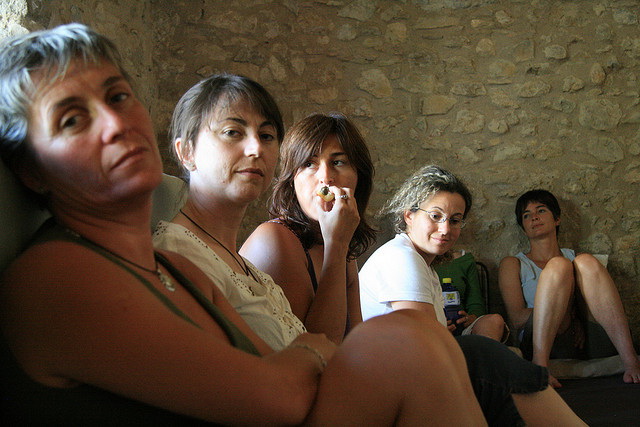Group or individual therapy, which is best? A loaded question, but one that deserves our full attention. Whichever form your psychotherapy takes this factor, group or individual treatment has inherent advantages and limitations. In certain situations, there are specific recommendations regarding which form of treatment is used. In other cases it may be a mutually decided upon choice between your therapist and you.
Why Group Therapy?
Although group therapy often remains an option, the advantages of group therapy far outweigh those opposing it. Let’s look at some of the conditions where the choice of group therapy may be strongly indicated:
- Educational/learning activities
- Medication and life skills information
- If the client has relationship issues
- Where the support of other clients with similar issue can be beneficial.
- Certain personality disorders, psychoses, or related conditions.
- An overlooked use for group therapy is in the treatment of addictions and some forms of PTSD
When considering which option is best it may surprise you to learn that there are many nuances present during the processes of group psychotherapy. By all appearances everything is pretty straight forward. There’s the therapist, clients, a meeting area, and an agenda. In the background when recommending group therapy every effort is made to insure that two criteria are met:
- Suitability of the client with the group
- Clearly identified goals and benefits
Whatever the reasons for recommending group therapy this remains your decision.
Resistance to Group Therapy
For many people simply introducing the option of group therapy sets off bells and whistles. It is not unlike those reactions many of us have to making a public speech. The mere mention of it triggers anxiety and resistance. It often initiates an underlying dance between the therapist and client. Spoken or silently delivered, thoughts like these may prevail:
“Do I want to go there?”
“Maybe it’s really no big deal.”
“This is embarrassing.”
“I’m not going to say anything.”
The above statements are often present in the early phases of psychotherapy. Over time, except in those clients with an oppositional character, psychosis, or similar disorders they may resolve themselves.
Depending on the personality or the diagnosis of the client these barriers can present significant challenges. It is during the initial intake that the decision to participate in individual or group therapy is discussed. Here again, your participation in a group is voluntary.
Inside a Group Therapy Session
The time has come, for better or worse, you are now in the catbird seat. Your initial introduction to the group begins with your showing up. Depending on the size of the group there is that initial awkwardness kind of like being the new kid on the block.
Usually other group members are there to offer you support. Here, the best advice is the oldest: take a deep breath and relax. Unlike your first individual therapy session where you can nervously await the arrival of your therapist pretty much alone, here you have an audience watching your every move.
Once those initial awkward moments are behind you everyone settles in and the work begins. Here you are a part of the whole. Not every word spoken addresses you specifically. Quite often the first few minutes of group time are spent catching up. The flow of the session, then takes on the direction of the session.
For those new to group therapy it may come as a surprise to find out that there is usually a plan behind the sometimes apparent chaos. From the therapist point of view they will introduce a broad topic having a common link between the group and let the group have at it. As the therapist facilitates the discussion they may ask other group members for examples of how this may apply in their own lives. Soon, even the shyest member will have something to say.
At other times the therapist may select some other form of delivering a message. These can include films, slides, handouts, or other media. The important lesson is that there is a certain cohesiveness to each group member.
Individual and Group Therapy
While the majority of psychotherapy is done in individual session this does not preclude the option for group therapy. In fact, this is a great way of discussing your circumstances and to get feedback on which approach might serve you better. There are several pieces of information you may want to access:
- What groups are offered?
- What are the methods of treatment used in individual and group therapies?
- Length of treatment?
- How often do you meet?
- Can you move from one treatment method to the other?
- Which one has the better results
- What is the therapist’s opinion?
Once you have satisfactory information, take the time to think about your decision. And then act.
I have tried to provide you with a range of information about group therapy. As a therapist, I have used both individual and group therapies with some degree of success. In closing, let me provide you with an example of placement in group or individual therapy.
Recent example from my practice
A 30 year old named Linda (name changed for privacy reasons) came into the office requesting treatment for disruptive and destructive behaviors related to her diagnosis of a Borderline Personality Disorder. The primary behaviors she was exhibiting was manipulation, intrusiveness, and flashes of potentially dangerous anger. As we discussed her situation, it became apparent that in a one-on-one therapeutic setting she would be in a constant battle to control the process. Linda needed the structure and peer pressure that a group setting offers. Offering Linda the option of individual therapy could result in the sabotaging of the process.
Conclusion
We took a brief walk through the workings of group therapy. As I tried to make clear there are significant differences between group and individual work. Neither one is superior to the other. Each has its proper place in the continuum of behavioral health care. The one thing to keep in mind is this, make sure the type of treatment you select will address your issues.
Image: flickr.com/photos/marco40134/2615718877








